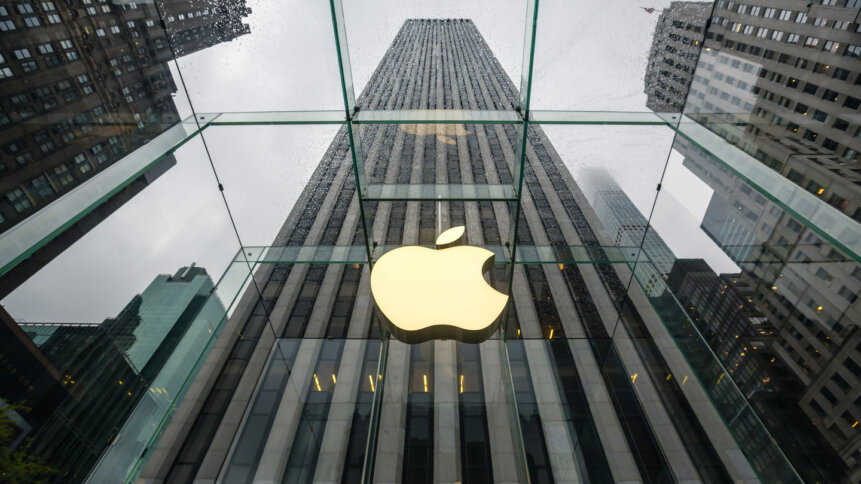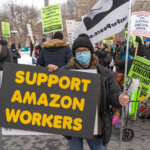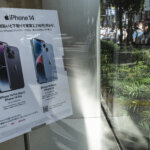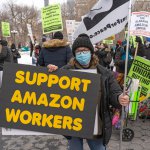Apple’s second union forms in Oklahoma

While the eyes of union-watchers in the technology industry turned mournfully to Amazon in Albany, New York and the dismal defeat of the Amazon Labor Union’s attempts to set up a union there, the Apple store in in Oklahoma City, Oklahoma offered much more positive news for fans of workers’ rights.
While the number of staff Apple workers in Oklahoma City’s Penn Square Mall Apple store is much smaller than, for instance, the number who voted in the Albany Amazon warehouse, the response in Oklahoma was significantly more pro-union. Of 88 workers who voted, 56 (or 64%) voted to form a union at the store, with 32 voting against and only 7 staffmembers not voting.
Predictors of change
Following in the wake of the tech giant’s first retail union in Towson, Maryland four months earlier, it’s undoubtedly too early to predict a new wave of workers’ rights erupting throughout the manufacturer’s US empire. But there are definite predictors of change in the Oklahoma union victory, of which the company would be wise to take note.
Like the JFK8 union victory for the Amazon Labor Union in Staten Island, the Penn Square Mall union – which will be affiliated into the Communication Workers of America (CWA), rather than standing alone – was mostly organized by millennials and Gen Z workers, looking for more say in their pay and conditions in the wake of the Covid pandemic.
While that is the mission of most unions, it was met by bland self-congratulation by Apple, rather than by any promise to engage with the union.
“We believe the open, direct and collaborative relationship we have with our valued team members is the best way to provide an excellent experience for our customers, and for our teams,” the company’s statement read. “We’re proud to provide our team members with strong compensation and exceptional benefits. Since 2018, we’ve increased our starting rates in the US by 45% and we’ve made many significant enhancements to our industry-leading benefits.”
The big dissonance
In that wording, we can read the dissonance that exists between a tech company built by baby boomers (Steve Jobs was born in 1955, Steve Wozniak in 1950) and the aspirations, expectations, and beliefs of millennials and Gen Z workers. It’s the same dissonance that’s visible throughout the realms of the technology giants, and it’s why the Oklahoma union victory is likely to spread and grow throughout the technology world, just as it’s currently doing through the likes of Starbucks (also built by baby boomers).
Baby boomers – who were responsible for creating most of the modern technology empires excluding social media platforms – tend towards a mindset that by offering what they think are reasonable pay and conditions, they defuse the “need” for their staff to organize and have any say over their pay and conditions.
The logic runs that if they create an atmosphere and a pay scale that “should” be attractive to workers, those workers will have no need to organize, and essentially “waste everyone’s time” with unions, collective bargaining, or standing for workers’ right which – by simple virtue of not already being granted to them by the benevolent tech company – must be inherently unreasonable.
The new traditionalists
The technology giants still think of themselves as cool, disruptive players, entirely unlike traditional businesses, where such things as unions might have been necessary to deal with unscrupulous bosses.
But there’s been a separation between what tech companies do and how they see themselves. Certainly, in terms of what tech giants do, they’re still innovative, fresh, and disruptive, bringing life-changing technology from design and development to market, shifting the cultural paradigm of what’s possible in a whole range of environments.
Meanwhile, millennials and Gen Z workers see the tech giants that do all this as legacy businesses. They’ve existed for at least most, if not all of these workers’ lifetimes, so they’re treated exactly the same as workers of previous generations treated manufacturing or blue collar industry bosses – as people from whom concessions and change must be wrested by negotiation.
Southern pride
Particularly in the wake of the pandemic, younger workers are keen to see their by-now traditional roles in the tech and retail sectors change to move with the times, while the giants like Apple are still congratulating themselves on paying vaguely decent wages.
Another big sign that things are changing in the tech and retail sectors is the geography of the Oklahoma union win. The southern states have been, by tradition and ethos, legendarily unsupportive of the notion of unions. There’s an ethos of uncomplaining self-sufficiency there that inherently distrusts the idea of collectivized workers banding together against people who ‘give’ them jobs and help them feed their families.
While only 10.3% of all workers in America are unionized, Oklahoma is traditionally particularly unfavorable ground for a union uprising. Only 5.6% of Oklahoma workers are unionized – just above half the national average, according to Labor Department statistics.
If young workers like those who organized the Penn Square Mall Apple store union, can create a new union branch in Oklahoma City, there’s nothing to suggest similar unions shouldn’t succeed nationwide – assuming the company doesn’t indulge in Amazon-style dissuasion techniques, and swing the might of legal challenges behind attempts to make them disappear, even when they’re established.
This is why the giant technology companies need a reality check on workers’ rights and unionization. They are not the disrupters they believe themselves to be any more, and the more resistant they are to unionization, the further they distance themselves from whole new generations of their workforce.










